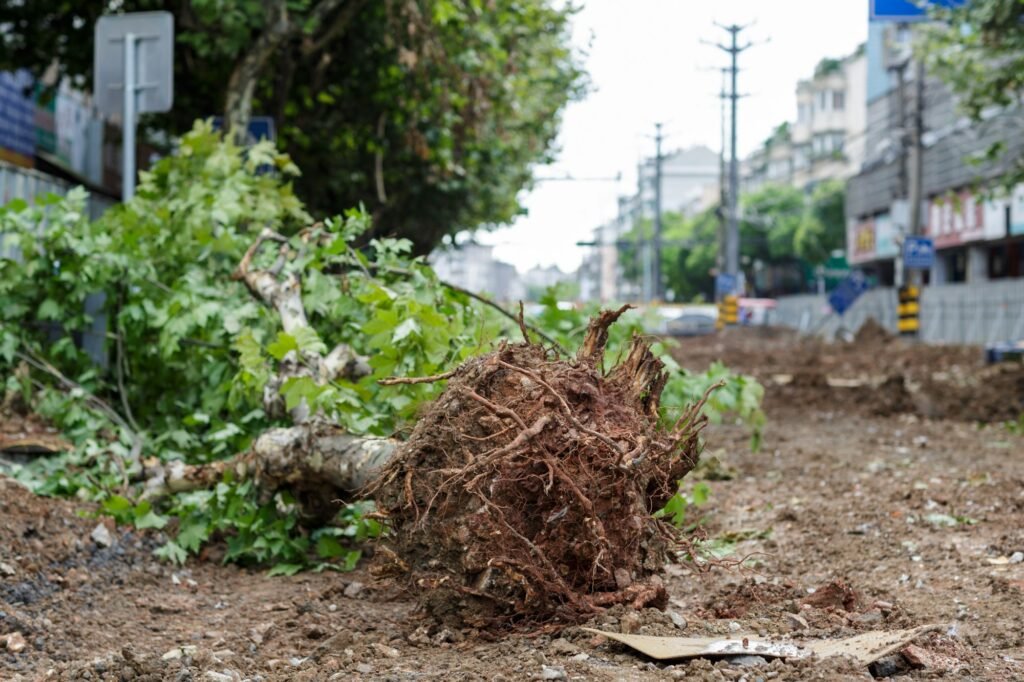Root rot is a pervasive and potentially devastating tree disease that can affect a wide variety of trees and shrubs. This common ailment is often caused by overwatering, poor drainage, or fungal infections. Understanding the signs, causes, and treatment options for root rot is essential for maintaining the health and longevity of your trees. In this article, we will delve into the intricacies of root rot, explore its symptoms and prevention strategies, and highlight the importance of seeking professional tree care from experts like Drury Tree Service in St. Louis, MO.
What Is Root Rot?
Root rot is a condition that affects the roots of a tree, causing them to decay and die. This disease is typically caused by excessive moisture around the roots, which creates an ideal environment for fungi and bacteria to thrive. There are several types of fungi known to cause root rot, including Phytophthora, Pythium, and Armillaria. These pathogens invade the root system, impairing the tree’s ability to absorb water and nutrients, ultimately leading to the tree’s decline and death if left untreated.
Symptoms of Root Rot
Identifying root rot early is crucial for the survival of your tree. Here are some common symptoms to watch out for:
- Wilting and Yellowing Leaves: One of the first signs of root rot is the wilting of leaves, even when the soil is moist. Leaves may also turn yellow or brown and fall off prematurely.
- Poor Growth: Trees affected by root rot often exhibit stunted growth, reduced vigor, and sparse foliage.
- Soft, Mushy Roots: Upon inspection, the roots of an affected tree may appear dark, mushy, and emit a foul odor. Healthy roots, in contrast, are firm and white.
- Cankers and Lesions: Fungal infections may cause cankers or lesions on the trunk and roots, leading to further damage and decay.
- Fungal Growth: The presence of mushrooms or fungal bodies around the base of the tree can indicate root rot.
Causes of Root Rot
Understanding the causes of root rot is essential for effective prevention and treatment. Some of the primary causes include:
- Overwatering: Excessive watering can saturate the soil, depriving the roots of oxygen and creating a breeding ground for fungi.
- Poor Drainage: Soil that does not drain well can lead to standing water around the roots, increasing the risk of root rot.
- Compacted Soil: Compacted soil restricts air and water movement, promoting conditions favorable to root rot.
- Infected Soil or Plants: Introducing infected plants or using contaminated soil can spread the pathogens responsible for root rot.
Prevention and Treatment
Preventing root rot requires proper tree care and attention to soil conditions. Here are some strategies to keep your trees healthy:
- Proper Watering: Avoid overwatering your trees. Water them deeply but infrequently, allowing the soil to dry out between watering sessions.
- Improve Drainage: Ensure that your soil has good drainage by adding organic matter or installing drainage systems if necessary.
- Mulching: Apply mulch around the base of the tree to help retain moisture and regulate soil temperature, but avoid piling it against the trunk.
- Avoid Compaction: Prevent soil compaction by avoiding heavy foot traffic or machinery around the tree’s root zone.
- Regular Inspections: Conduct regular inspections of your trees for signs of root rot and other diseases.
Professional Tree Care for Root Rot
While some cases of root rot can be managed with proper care and attention, severe cases often require professional intervention. Tree care experts, like those at Drury Tree Service, have the knowledge and tools to diagnose and treat root rot effectively.
A professional tree service can assess the extent of the damage and recommend appropriate treatments, such as fungicide applications, soil amendments, and improved drainage solutions. They can also provide guidance on proper watering practices and ongoing maintenance to prevent future occurrences of root rot.
Why Choose Drury Tree Service?
Drury Tree Service offers comprehensive tree care solutions tailored to the specific needs of your landscape. Their team of certified arborists is experienced in diagnosing and treating root rot and other tree diseases. By choosing a professional tree service, you ensure that your trees receive the highest standard of care, promoting their health and longevity.
Conclusion
Root rot is a serious tree disease that can lead to significant damage if not addressed promptly. By understanding the symptoms, causes, and prevention strategies, you can take proactive steps to protect your trees. However, when faced with severe root rot, seeking professional assistance from experts like Drury Tree Service, is crucial for effective treatment and ongoing tree care. Don’t wait until it’s too late—contact a professional tree service today to ensure the health and vitality of your trees.

